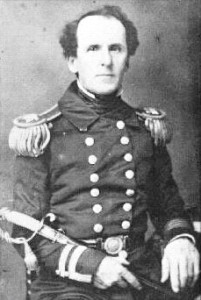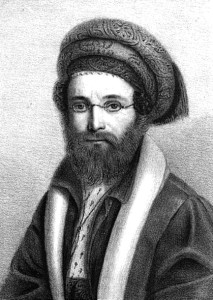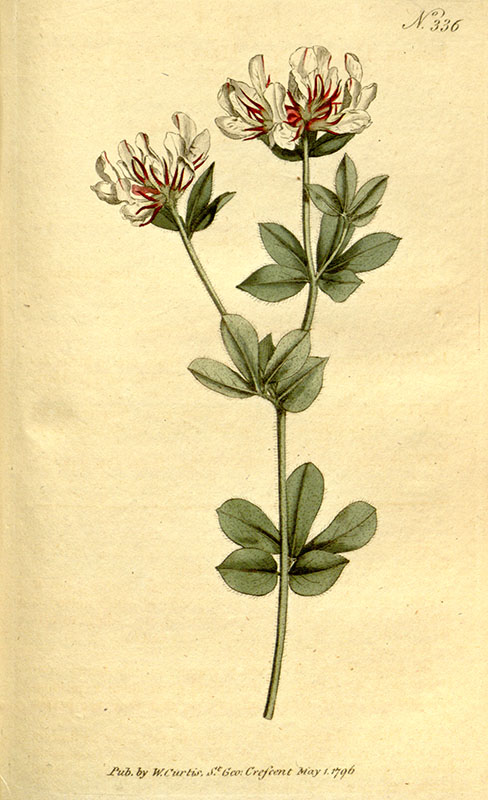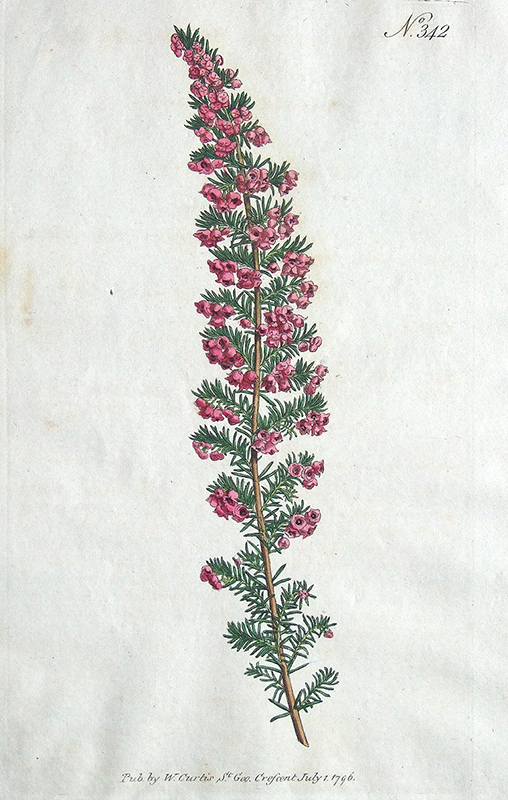From Albert G. Mackey’s Encyclopedia of Freemasonry, this installment of Symbols & Symbolism presents his exploration of the mystical properties of the Acacia. Note, some links have been added as reference to the original quoted sources. Look for future installments on Symbols & Symbolism here, and on YouTube.
From the Encyclopedia:
An interesting and important symbol in Freemasonry. Botanically, it is the acacia vera of Tournefort, and the mimosa nilotica of Tinneus, called babul tree in India. It grew abundantly in the vicinity of Jerusalem, where it is still to be found, and is familiar in its modern use as the tree from which the gum arabic of commerce is derived.

Oliver, it is true, says that “there is not the smallest trace of any tree of the kind growing so far north as Jerusalem” (Landm.,ii.,149); but this statement is refuted by the authority of Lieutenant Lynch, who saw it growing in great abundance in Jericho, and still farther north . (Official Report of the United States of America to Explore the Dead Sea and the River Jordan by Lieutenant W. F. Lynch, U.S.N) The Rabbi Yehoseph Schwarz, who is excellent authority, says : “The Acacia (Shittim) tree, Al Bunt, is found in Palestine of different varieties ; it looks like the Mulberry tree, attains a great height, and has a hard wood . The gum which is obtained from it is the gum arabic .” (Descriptive Geography and Historical Sketch of Palestine, p308, Leeser’s translation. Phila., 1850) Schwarz was for sixteen years a resident of Palestine, and wrote from personal observation. The testimony of Lynch and Schwarz should, therefore, forever settle the question of the existence of the acacia in Palestine.

The acacia is called in the Bible Shittim, which is really the plural of Shittah, which last form occurs once only in Isaiah 41:19. It was esteemed a sacred wood among the Hebrews, and of it Moses was ordered to make the tabernacle, the Ark of the Covenant, the table for the shewbread, and the rest of the sacred furniture. (Exodus 25-27) Isaiah, in recounting the promises of God’s mercy to the Israelites on their return from the captivity, tells them that, among other things, he will plant in the wilderness, for their relief and refreshment, the cedar, the acacia (or, as it is rendered in our common version, the shittah), the fir, and other trees.
The first thing, then, that we notice in this symbol of the acacia, is that it had been always consecrated from among the other trees of the forest by the sacred purposes to which it was devoted. By the Jew, the tree from whose wood the sanctuary of the tabernacle and the Holy Ark had been constructed would ever be viewed as more sacred than ordinary trees. The early Masons, therefore, very naturally appropriated this hallowed plant to the equally sacred purpose of a symbol, which was to teach an important divine truth in all ages to come. Having thus briefly disposed of the natural history of this plant, we may now proceed to examine it in its symbolic relations.

First, the acacia, in the mythic system of Freemasonry, is preeminently the symbol of the IMMORTALITY OF THE SOUL – that important doctrine which it is the great design of the Institution to teach. As the evanescent nature of the flower, which “cometh forth and is cut down,” reminds us of the transitory nature of human life, so the perpetual renovation of the evergreen plant, which uninterruptedly presents the appearance of youth and vigor: is aptly compared to that spiritual life in which the soul, freed from the corruptible companionship of the body, shall enjoy an eternal spring and an immortal youth. Hence, in the impressive funeral service of our Order, it is said that “this evergreen is an emblem of our faith in the immortality of the soul. By this we are reminded that we have an immortal part within us, which shall survive the grave, and which shall never, never, never die.” And again, in the closing sentences of the monitorial lecture of the Third Degree, the same sentiment is repeated, and we are told that by “the ever-green and ever-living sprig ” the Mason is strengthened” with confidence and composure to look forward to a blessed immortality.” Such an interpretation of the symbol is an easy and a natural one; it suggests itself at once to the least reflective mind; and consequently, in some one form or another, is to be found existing in all ages and nations. It was an ancient custom-which is not, even now, altogether disused-for mourners to carry in their hands at funerals a sprig of some evergreen, generally the cedar or the cypress, and to deposit it in the grave of the deceased. According to Dalcho,* the Hebrews always planted a sprig of the acacia at the head of the grave of a departed friend. [John] Potter tells us that the ancient Greeks “had a custom of bedecking tombs with herbs and flowers.”‡ All sorts of purple and white flowers were acceptable to the dead, but principally the amaranth and the myrtle. The very name of the former of these plants, which signifies “never fading,” would seem to indicate the true symbolic meaning of the usage, although archaeologists have generally supposed it to be simply an exhibition of love on the part of the survivors. Ragon says that the ancients substituted the acacia for all other plants because they believed it to be incorruptible, and not liable to injury from the attacks of any kind of insect or other animal-thus symbolizing the incorruptible nature of the soul.
Hence we see the propriety of placing the sprig of acacia, as an emblem of immortality, among the symbols of that degree, all of whose ceremonies are intended to teach us the great truth that “the life of man, regulated by morality, faith, and justice, will be rewarded at its closing hour by the prospect of Eternal Bliss.”≠ So, therefore, says Dr. Oliver, when the Master Mason exclaims “my name is Acacia,” it is equivalent to saying, “I have been in the grave – I have triumed over it by rising from the dead-and being regenerated in the process, I have a claim to life everlasting.” (See Landmarks, ii.,151, note 27)
The sprig of acacia, then, in its most ordinary signification, presents itself to the Master Mason as a symbol of the immortality of the soul, being intended to remind him, by its ever-green and unchanging nature, of that better and spiritual part within us, which, as an emanation from the Great Architect of the Universe, can never die. And as this is the most ordinary, the most generally accepted signification, so also is it the most important; for thus, as the peculiar symbol of immortality, it becomes the most appropriate to an Order all of whose teachings are intended to inculcate the great lesson that “life rises out of the grave.” But incidental to this the acacia has two other interpretations which are well worthy of investigation.
Secondly, then, the acacia is a symbol of INNOCENCE. The symbolism here is of a peculiar and unusual character, depending not on any real analogy in the form or use of the symbol to the idea symbolized, but simply on a double or compound meaning of the word. For ακακία in the Greek language, signifies both the pant in question and the moral quality of innocence or purity of life. In this sense the symbol refers, primarily, to him over whose solitary grave the acacia was planted, and whose virtuous conduct, whose integrity of life and fidelity to his trusts have ever been presented as patterns to the craft, and consequently to all Master Masons, who, by this interpretation of the symbol, are invited to emulate his example.
Hutchinson, indulging in his favorite theory of Christianizing Masonry, when he comes to this signification of the symbol, thus enlarges on the interpretation:
We Masons, describing the deplorable estate of religion under the Jewish law, speak in figures: ‘Her tomb was in the rubbish and filth cast forth of the temple, and ACACIA wove its branches over her monument;’ ακακία being the Greek word for innocence, or being free from sin; implying that the sins and corruptions of the old law, and devotees of the Jewish altar, had hid religion from those who sought her, and she was only to be found where INNOCENCE survived, and under the banner of the divine Lamb ; and as to ourselves professing that we were to be distinguished by our ACACY, or as true ACACIANs in our religious faith and tenets.†
But, lastly, the acacia is to be considered as the symbol of INITIATION. This is by far the most interesting of its interpretations, and was, we have every reason to believe, the primary and original; the others being but incidental.
It leads us at once to the investigation of the significant fact that in all the ancient initiations and religious mysteries there was some plant peculiar to each, which was consecrated by its own esoteric meaning, and which occupied an important position in the celebration of the rites, so that the plant, whatever it might be, from its constant and prominent use in the ceremonies of initiation, came at length to be adopted as the symbol of that initiation.
Thus, the lettuce was the sacred plant which assumed the place of the acacia in the mysteries of Adonis. (See Lettuce) The lotus was that of the Brahmanical rites of India, and from them adopted by the Egyptians. (See Lotus) The Egyptians also revered the erica or heath; and the mistletoe was a mystical plant among the Druids. (See Erica and Mistletoe) And, lastly the myrtle performed the same office of symbolism in the mysteries of Greece that the lotus did in Egypt or the mistletoe among the Druids. (See Myrtle)
In all of these ancient mysteries, while the sacred plant was a symbol of initiation, the initiation itself was symbolic of the resurrection to a future life, and of the immortality of the soul . In this view, Freemasonry is to us now in the place of the ancient initiations, and the acacia is substituted for the lotus, the erica, the ivy, the mistletoe, and the myrtle. The lesson of wisdom is the same – the medium of imparting it is all that has been changed.
Returning, then, to the acacia, we find that it is capable of three explanations. It is a symbol of immortality, of innocence, and of initiation. But these three significations are closely connected, and that connection must be observed, if we desire to obtain a just interpretation of the symbol. Thus, in this one symbol, we are taught that in the initiation of life, of which the initiation in the Third Degree is simply emblematic, innocence must for a time lie in the grave, at length, however, to be called, by the word of the Great Master of the Universe, to a blissful immortality. Combine with this the recollection of the place where the sprig of acacia was planted – Mount Calvary – the place of sepulcher of him who “brought life and immortality to light,” and who, in Christian Masonry, is designated, as he is in Scripture, as “the lion of the tribe of Judah” ; and remember, too, that in the mystery of his death, the wood of the cross takes the place of the acacia, and in this little and apparently insignificant symbol, but which is really and truly the most important and significant one in Masonic science, we have a beautiful suggestion of all the mysteries of life and death, of time and eternity, of the present and of the future.
Notes:
* “This custom among the Hebrews arose from this circumstance . Agreeably to their laws, no dead bodies were allowed to be interred within the walls of the City ; and as the Cohens, or Priests, were prohibited from crossing a grave, it was necessary to place marks thereon, that they might avoid them. For this purpose the Acasia was used.” (Dalcho, 2nd Oration, p . 23, note)
Editors Note: Dalcho’s full quote reads:
Another circumstance, my Brethren, I beg leave to recall to your recollection. It is the spring of Cassia, as it is generally termed in our Lodges, where we speak of its strong scent, &c. Cassia, my Brethren, did not grow about Jerusalem. It is an alteration of the word Acasia, the Mimosa Nilotica of Linnæus, belonging to the 23d class and 1sr order, Polygamia Monæcia, of his system. This shrub grew there in abundance, and from the habit arising from an indispensable custom among the Hebrews, a branch was broken off from a neighboring bush, and placed where the Fellow-Crafts fond it, who, perceiving it to be withered, when all around flourished in perfection, they were led to draw those conclusions which we teach in our Lodges.
*These customs among the Hebrews arouse from this circumstance. Agreeably to their laws, no dead bodies were allowed to be interred within the walls of the City; and as the Cohens, or Priests, were prohibited from crossing a grave, it is necessary to place marks thereon, that they might avoid them. For this purpose the Acasia was used.
It is further mentioned in the report of the Inspectors, that some knowledge of the Talmud is necessary to enable us to understand some of our ceremonies. It is so, my respectable Brethren, and to which they might have added, some knowledge, also, of the mysteries of the Cabala. That expressive mystic figure, of the Divinity, formed in the Fellow-Craft’s degree, constitutes, in the Hebrew language, the word Shaday, Omnipotent.
In the Sublime degrees, it is elegantly illustrated.* From these, and many other, errors which have unfortunately crept into the Blue degrees, it must be evident, that it is necessary, that a man of science should preside over a Lodge, that the true ceremonies and principles of the mystic Craft, may be taught in language, which will bear the test of criticism.
I object to the reason assigned by Dalcho, but of the existence of the custom there can be no question, notwithstanding the denial or doubt of Dr. Oliver . Blount (A Voyage into the Levant, p. 197) says, speaking of the Jewish burial customs, “those who bestow a marble stone over any [gravel have a hole a yard long and a foot broad, in which they plant an evergreen, which seems to grow from the body and is carefully watched.”
Hasselquist (Travels, p . 28) confirms his testimony. I borrow the citations from Brown (Antiquities of the Jews, vol . ii ., p. 356), but have verified the reference to Hasselquist. The work of Blount I have not been enabled to consult.
‡ Archaeologia Graeca, Or, The Antiquities of Greece, Volume 2, John Potter. 569.
≠ Dr . Crucefix, MS . quoted by Oliver. Landmarks, ii., 2.
† Hutchinson’s Spirit of Masonry, Lect. IX.;p . 160, ed . 1775.







http://realitysandwich.com/175540/acacia_emblem_soul/
Interesante ser de la acacia
Amazing information thanks
this symbolism is a lot more literal than you might think, the acacia tree has dmt inside of its leaves, branches and bark. and dmt is also the most psychoactive chemical in the world which is also produced in our lungs and hypothesized that its also produced in the pineal gland, as it is in rats, and when people trip off of this substance the experience is exactly as all of the symbolic meanings but is something that happens, a rebirth, it truly cleanses you of your sin, and the part about initiation makes a lot more sense too, don’t take just my word for it, look into it too
Pingback: The Acacia Tree | Freemasonry